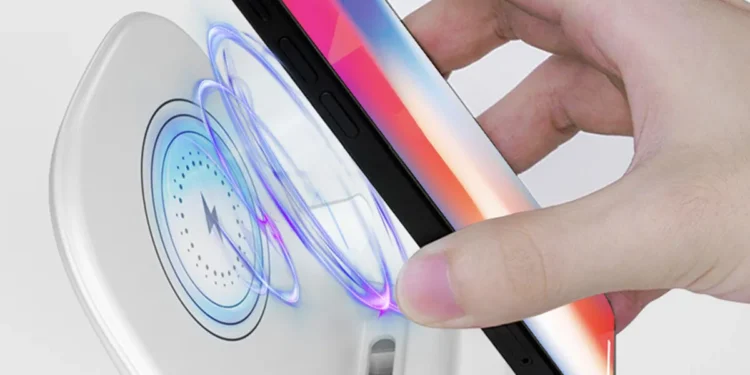In the world of wireless, the marvel of wireless charging has become an integral part of our charging experience, eliminating the need for traditional wired charging solutions. Let’s delve into the science behind wireless charging, understand how wireless chargers work, and explore the myriad benefits they bring to the charging arena.
Wireless Charging Explained
Wireless Charging – A Cordless Marvel
Wireless charging, also known as inductive charging, is a revolutionary technology that enables users to charge their devices without the hassle of cords. In the world of wireless charging, the Qi wireless charging standard has emerged as a popular and widely adopted method.
How Wireless Charging Works
Qi Wireless Charging Standard Unveiled
Wireless charging works through the Qi wireless charging standard, where a wireless charger, consisting of a charging pad or stand, transfers energy to a compatible device placed on it. The science behind wireless charging involves the use of electromagnetic fields generated by the charging pad, which induces an electric current in the receiver coil of the device, charging its battery efficiently.
Qi Wireless Charging: A Standard for the Future
Qi wireless charging, developed by the Wireless Power Consortium, has become the industry standard. It regulates the charging process, ensuring efficient and adaptive fast charging. This standard ensures that devices compatible with wireless charging can seamlessly make use of this hassle-free charging experience.
The World of Wireless Charging
Adopting the Wireless Revolution
The world of wireless chargers extends beyond smartphones, with various devices now compatible with this efficient charging method. From smartwatches to electric toothbrushes, the convenience of wireless charging has become increasingly popular.
Wireless Charging Capabilities
More Than Just Charging
Wireless charging offers not only efficient charging but also a faster and adaptive solution. The wireless charging pad or dock, popular in the world of wireless, transfers energy to the device, enabling faster charging times and a more efficient charging process.
Wireless Charger Components
Under the Hood of Wireless Charging
Understanding the components of wireless charging is vital to grasp how wireless chargers work seamlessly.
Transmitter Coil
The transmitter coil, situated in the charging pad, plays a pivotal role in generating the electromagnetic field necessary for wireless charging.
Receiver Coil
Embedded in the device, the receiver coil captures the electromagnetic field and converts it into electric current, facilitating the charging process.
Power Source
The power source fuels the transmitter coil, ensuring a continuous supply of electricity for efficient wireless charging.
Common Devices and Wireless Charging
Beyond Smartphones
While smartphones are the most common beneficiaries of wireless charging, the technology extends its reach to various devices.
Wearables
Smartwatches and fitness trackers often come equipped with wireless charging capabilities, providing users with a convenient charging option.
Electric Toothbrushes
Even electric toothbrushes have joined the world of wireless charging, eliminating the need for cords and enhancing the overall charging experience.
Electric Vehicles
Wireless charging is making waves in the automotive industry, with electric vehicles adopting this technology for more efficient charging solutions.
Advancements in Wireless Charging
The Future of Charging Technologies
As we explore wireless charging, it’s evident that advancements in this technology continue to shape the way we charge our devices. From resonant inductive charging to magnetic resonance, the wireless charging landscape is evolving to offer even more convenient and faster wireless charging solutions.
Also Read: Myrtle Gonzalez
Charging Methods Unveiled
Inductive Charging and Beyond
Inductive charging, the most popular method in the realm of wireless charging, involves the use of electromagnetic fields to transfer energy. However, the world of wireless charging goes beyond this, incorporating resonant charging and radio frequency (RF) charging, promising longer-range charging and increased charging speeds.
Resonant Charging
Resonant charging allows for a greater distance between the charging pad and the device, reducing alignment issues. This method holds promise for future innovations, making wireless charging even more user-friendly.
Radio Frequency (RF) Charging
An emerging technology, RF charging, utilizes radio waves for power transfer. While not as widespread, it offers the potential for charging devices at a distance, further enhancing the wireless charging experience.
Conclusion
Exploring Wireless Charging: How Wireless Charger Works and Its Benefits sheds light on the transformative impact of wireless charging in our daily lives. As we witness the shift towards a cordless future, the efficiency, convenience, and environmental benefits of wireless charging are becoming increasingly evident.


 Home
Home









